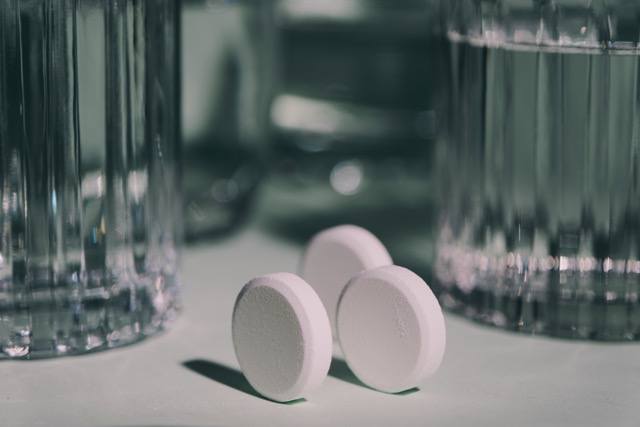The effects of ovarian aging on women's health
The puzzles of ovarian aging and menopause: A look at female fertility

Caroline Veronez
Over the past century and a half, people's life expectancy has increased significantly, so that today they live to an average of around 85 years. However, one aspect of female life expectancy, the natural menopausal age (MPA), has remained relatively constant at around 50 years. This astonishing contrast between the extension of life and the constancy of natural menopause raises questions about female fertility and ovarian aging.
The declining fertility of women
Research has shown that women's fertility declines from their late 20s to early 30s and accelerates after age 35, particularly among women who have never given birth to a child. That means that a woman's ability to get pregnant decreases as she ages. Ovarian aging is a complex process that is influenced by both genetic and environmental factors, which also affect the timing of menopause.
Genetics and quality of oocytes
With increasing age, the genetic integrity of oocytes (oocytes) decreases. By the age of 40, almost half of women are infertile. This decline in the quality and quantity of oocytes is a major factor in age-related infertility. This has led to more and more women worldwide choosing to postpone childbirth, leading to increased use of assisted reproductive technologies (ART).
Hormonal changes
The ovaries play a crucial role in maintaining a woman's hormonal balance. The decline in fertility as women age is associated with an increase in follicle-stimulating hormone (FSH) and a decrease in anti-mulleric hormone (AMH). These hormonal changes are linked to a decline in egg quality due to increased oxidative stress and DNA damage. They can also impair cognitive functions and even contribute to diseases such as Alzheimer's.
Estrogen, which is produced in the ovaries, plays a central role in women's health and influences everything from reproductive capacity to heart health, bone density, and mood. As the ovaries age, fluctuations in estrogen and progesterone production become unpredictable and eventually come to a standstill. This can increase the risk of various health problems, such as heart disease, incontinence, and osteoporosis.
Factors affecting ovarian aging
Several factors contribute to the quantity and quality of eggs in a woman's ovarian reserve. These include non-germline stem cells, genetics, mitochondrial health, and environmental factors. Understanding the molecular mechanisms underlying ovarian reserve decline and oocyte function is crucial for developing measures to halt ovarian aging and improve egg quality.
Although progress has been made in diagnosing and treating age-related fertility problems, apart from assisted reproductive technology, once the ovarian reserve has significantly shrunk, there are few effective treatment options. Researchers are studying various strategies, including the ability to reconstitute ovaries to create an alternative source of germ cells for reproduction and restore endocrine function.
In summary, understanding the complexity of ovarian aging, fertility, and their impact on women's health is critical to our quest for longer and healthier lives. As more and more women choose to have a child later in life, the need for better diagnostic tools and treatments in the area of reproductive medicine is obvious. This ongoing research is not only helping women on their journey to motherhood but also sheds light on the more general effects of aging and health.
In a world where life expectancy is increasing, it is crucial to continue researching the mysteries of ovarian aging and fertility in order to ultimately contribute to the better well-being of women worldwide.
References
Zhu, Z., Xu, W. & Liu, L. (2022). Ovarian Aging: Mechanisms and Intervention Strategies. Medical review, 2(6), 590—610. https://doi.org/10.1515/mr-2022-0031
Publiziert
12.9.2024
Kategorie
Health

Experte
Over the past century and a half, people's life expectancy has increased significantly, so that today they live to an average of around 85 years. However, one aspect of female life expectancy, the natural menopausal age (MPA), has remained relatively constant at around 50 years. This astonishing contrast between the extension of life and the constancy of natural menopause raises questions about female fertility and ovarian aging.
The declining fertility of women
Research has shown that women's fertility declines from their late 20s to early 30s and accelerates after age 35, particularly among women who have never given birth to a child. That means that a woman's ability to get pregnant decreases as she ages. Ovarian aging is a complex process that is influenced by both genetic and environmental factors, which also affect the timing of menopause.
Genetics and quality of oocytes
With increasing age, the genetic integrity of oocytes (oocytes) decreases. By the age of 40, almost half of women are infertile. This decline in the quality and quantity of oocytes is a major factor in age-related infertility. This has led to more and more women worldwide choosing to postpone childbirth, leading to increased use of assisted reproductive technologies (ART).
Hormonal changes
The ovaries play a crucial role in maintaining a woman's hormonal balance. The decline in fertility as women age is associated with an increase in follicle-stimulating hormone (FSH) and a decrease in anti-mulleric hormone (AMH). These hormonal changes are linked to a decline in egg quality due to increased oxidative stress and DNA damage. They can also impair cognitive functions and even contribute to diseases such as Alzheimer's.
Estrogen, which is produced in the ovaries, plays a central role in women's health and influences everything from reproductive capacity to heart health, bone density, and mood. As the ovaries age, fluctuations in estrogen and progesterone production become unpredictable and eventually come to a standstill. This can increase the risk of various health problems, such as heart disease, incontinence, and osteoporosis.
Factors affecting ovarian aging
Several factors contribute to the quantity and quality of eggs in a woman's ovarian reserve. These include non-germline stem cells, genetics, mitochondrial health, and environmental factors. Understanding the molecular mechanisms underlying ovarian reserve decline and oocyte function is crucial for developing measures to halt ovarian aging and improve egg quality.
Although progress has been made in diagnosing and treating age-related fertility problems, apart from assisted reproductive technology, once the ovarian reserve has significantly shrunk, there are few effective treatment options. Researchers are studying various strategies, including the ability to reconstitute ovaries to create an alternative source of germ cells for reproduction and restore endocrine function.
In summary, understanding the complexity of ovarian aging, fertility, and their impact on women's health is critical to our quest for longer and healthier lives. As more and more women choose to have a child later in life, the need for better diagnostic tools and treatments in the area of reproductive medicine is obvious. This ongoing research is not only helping women on their journey to motherhood but also sheds light on the more general effects of aging and health.
In a world where life expectancy is increasing, it is crucial to continue researching the mysteries of ovarian aging and fertility in order to ultimately contribute to the better well-being of women worldwide.
Referenzen
Zhu, Z., Xu, W. & Liu, L. (2022). Ovarian Aging: Mechanisms and Intervention Strategies. Medical review, 2(6), 590—610. https://doi.org/10.1515/mr-2022-0031
Publiziert
12.9.2024
Kategorie
Health

.svg)














